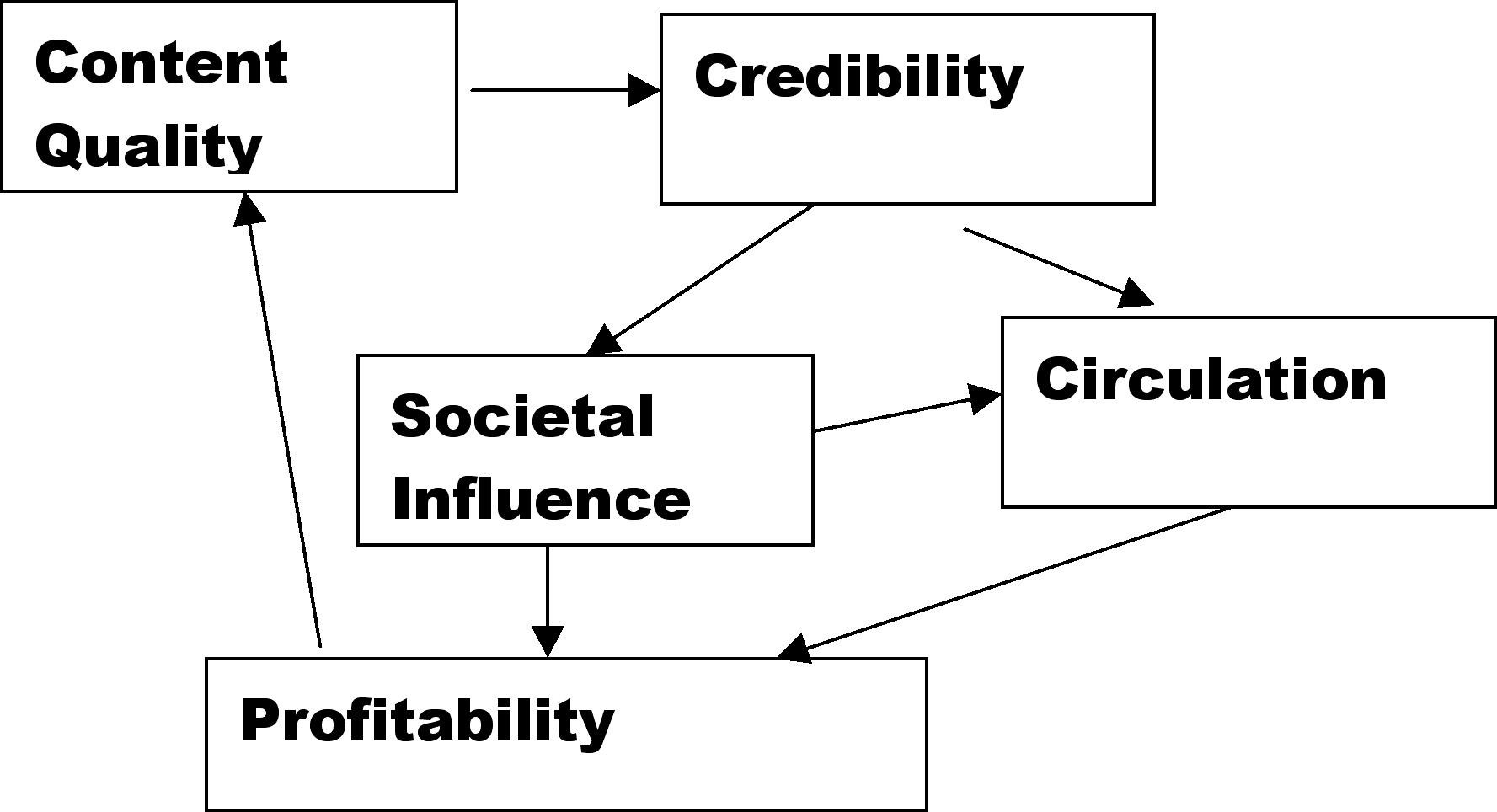| Introduction
by Philip Meyer |
|
| Good
journalism has always been the product of tension between profit making
and social responsibility. But there are recent signs that the struggle
is getting out of balance as publicly held companies defer to the short-term
demands of the investor community. One problem is that the costs of community-serving
journalism are easy to see while the benefits are not. The Quality Project
aims to correct this imbalance by finding ways to measure quality and track
its benefits to the bottom line. |
Our
model is one
articulated by Hal Jurgensmeyer (1932-1995), a Knight Ridder executive
in the 1970s who argued that a newspaper's main product is neither news
nor information but influence.
Societal Influence Model for the Newspaper Industry
It creates two kinds of influence, he said: societal influence, which is not for sale, and commercial influence, which is for sale. But the two are closely related because it is the societal influence that gives value to the commercial influence. Published views of investment analysts suggest that they employ a much simpler model: a newspaper is a platform for delivering advertising to eyeballs. Their criterion for evaluating the platform is cost per eyeball. With resources assembled from the John S. and James L. Knight Foundation, New Directions for News, and the Knight Chair in Journalism at the University of North Carolina at Chapel Hill, we are seeking the widest possible collaboration in developing empirical testing of the influence model. My introductory research course (JOMC 201) and the seminar in media analysis (JOMC 302) are both organized around this project, and you can track its progress and find related sources on their syllabi. For a progress report on projects that have been launched to date, click here. For related readings, click here. We've already come up with some ideas for further research. To share ideas, please write to philip_meyer@unc.edu. |
